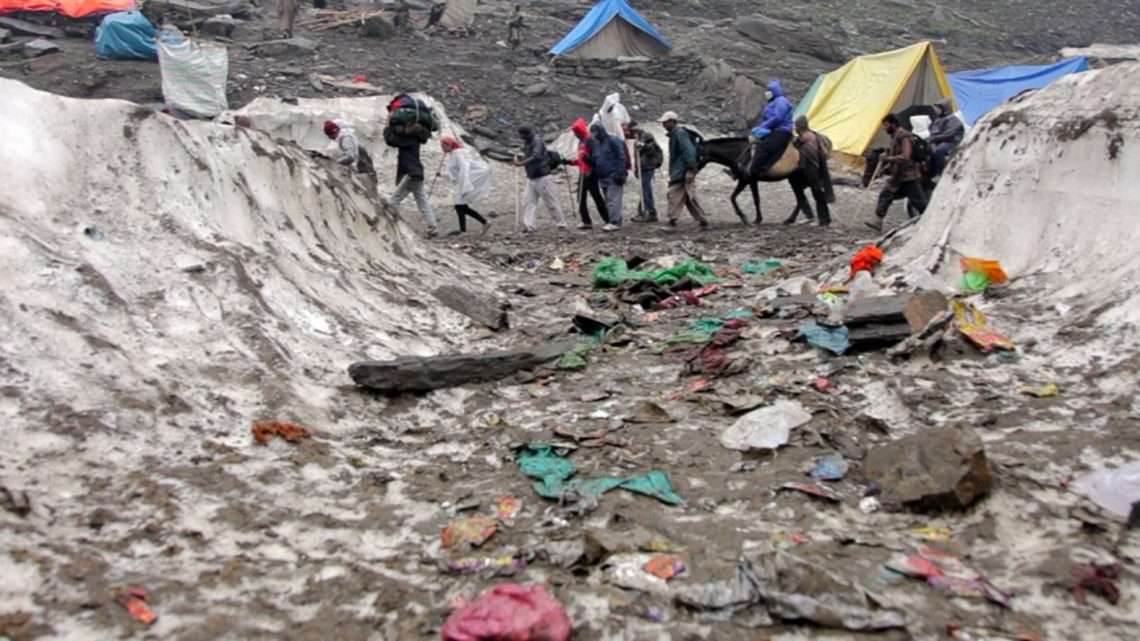
Pilgrimage at a Price: Environmental Impact of the Amarnath Yatra
August 7, 2024The Amarnath Yatra is a major Hindu pilgrimage in the Himalayas, attracting hundreds of thousands of devotees annually to Indian-illegally occupied Jammu and Kashmir (IIOJK). While it holds cultural and economic value, the pilgrimage also poses serious environmental challenges.
The influx of pilgrims has a detrimental impact on the fragile Himalayan ecosystem. The pilgrimage generates substantial waste, contributes to deforestation, and leads to soil and water pollution. Moreover, increased human activity accelerates glacier melt, further threatening the region’s environmental stability.
Although the Amarnath Yatra has been significant since the late 19th century, its resurgence in the 1980s marked a dramatic increase in pilgrim numbers. From just 4,500 participants in 1950, the number surged to 428,000 by 2023, intensifying the strain on the environment.
The rise in pilgrim numbers coincided with the emergence of far-right Hindu groups like the Vishwa Hindu Parishad (VHP) and Bajrang Dal. With government support, the Yatra was extended to 63 days by 2023. This expansion aligned with an Indian nationalist agenda in the 1990s, countering Kashmiri independence movements.
Established in 2001, the SASB was tasked with managing the Yatra. Its creation reinforced state control over the pilgrimage, transforming it into a symbol of national pride. In 2008, the Indian government proposed transferring 100 acres of forest land to SASB, sparking widespread protests that resulted in over 100 civilian deaths. The plan was eventually abandoned, highlighting the intense local opposition to such developments.
Environmentalists have consistently raised concerns about the unregulated influx of visitors. Various reports and committees have recommended controlling the number of pilgrims to mitigate environmental damage, but these suggestions have not been implemented, exacerbating the ecological strain.
The increased human activity in the region has contributed to glacier melt and higher carbon emissions. Over the past 37 years, the average annual temperature in the area has risen by 0.8°C, leading to reduced snow accumulation and decreased water availability, further stressing the environment.
Kashmir lies in a high-risk earthquake zone, having experienced over 100 earthquakes in the past two decades. Despite this, political developments have intensified the ecological risks. Following the revocation of Jammu and Kashmir’s semi-autonomous status in 2019, India accelerated efforts to implement a settler-colonial project, aiming for significant demographic changes. The extension of the Amarnath Yatra to 63 days in 2023 aligns with this agenda, further promoting Hindu religious tourism in the region.
The Indian government’s promotion of the “Hindu-isation” of Jammu and Kashmir, driven by the Hindutva project, poses severe risks to the region’s fragile ecosystem. The environmental degradation caused by the Amarnath Yatra, coupled with the area’s seismic vulnerability, underscores the urgent need for sustainable practices and policy interventions.

